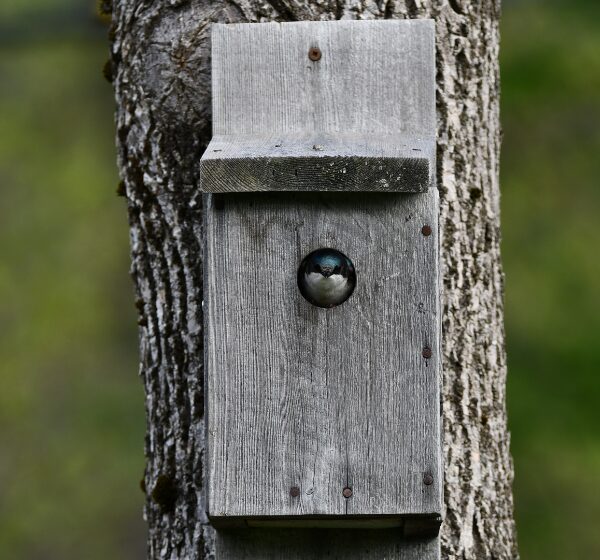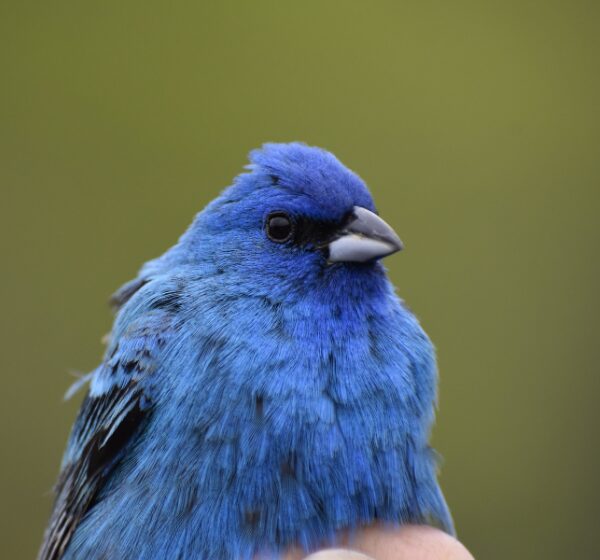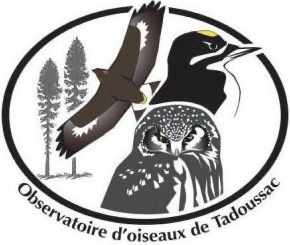Click here for more infos
Cap Tourmente National Wildlife Area
Since 2015, the Tadoussac Bird Observatory (TBO) has set up a migration monitoring station at the Cap Tourmente National Wildlife Area. This project is supported by Environment and Climate Change Canada.
Quebec’s most diverse ornithological site
The Cap Tourmente NWA is one of the most significant migratory stopovers in Quebec. Indeed, it is renowned to be the province’s “best birding site”, with a list of over 300 bird species. This richness stems from the reserve’s strategic location, at the convergence of the St. Lawrence Lowlands and the Canadian Shield (Laurentian Mountains), and at the confluence of the Fluvial and Maritime estuaries. The national reserve offers a wide variety of habitats, from intertidal to coastal marshes, from agricultural plains to lowland Laurentian forests, and up to mountain boreal forests. This variety of habitats, combined with the reserve’s position along the north shore of the St. Lawrence, which is the most important autumn migration corridor in the province, creates an exceptional concentration of birds during migration.
The NWA is also a very popular destination for thousands of nature lovers annually and is an ideal site for migratory bird interpretation through banding demonstration activities.


A banding station to monitor migration
Developped around autumn migration monitoring, the project has evolved to include monitoring of bird populations year-round, thanks to the support from Environment and Climate Change Canada. Monitoring bird populations now starts with spring migration (late April to early June), breeding season (June – July) and autumn migration (August – October).
An array of mist nets located near the Léon-Provancher pavilion, capture a sample of migrating birds. Each bird is carefully identified, banded, measured, weighed and released. Combined with visual surveys carried out on the site, banding data allows to understand population trends over time.

Bringing Canadians closer to nature
In addition to the research activities, outreach and interpretation activities are offered to the public. Attended by several thousand people and school groups each year, this project raises public awareness regarding the phenomenon of migration, as well as bird monitoring and conservation of our natural ecosystems.



Citizen science project
In 2023 we have developed a migration monitoring tool that aims to raise public awareness and highlight the importance of citizens’ contributions to large-scale scientific projects, notably at the Cap-Tourmente NWA, in order to track bird migration in a standardized way.
The analyses that will be carried out with these data, will complement the data obtained during migration via the migration monitoring program, using bird banding that we’ve been operating since 2015 and will provide a better understanding of bird migration in Quebec. The data accumulated will be of crucial importance for the understanding and conservation of migratory species nesting from the southern boreal forest to the Arctic.
Please feel free to test this project when you visit the reserve, and let us know if you have any comments.
Recaptures
Although these research activities focus primarily on standardized banding data (age, sex, weight, body measurements), recaptures provide us with important information on the migratory routes used by individual birds.

Specific projects
Other projects are carried out at the Cap Tourmente National Wildlife Area to gain a comprehensive view of all the birds which frequent the area during the breeding season.

Aerial insectivore nesting monitoring
Starting in 2023, this project aims to assess reproductive success and phenology of aerial insectivores, mainly Tree Swallows.
The monitoring focuses on a network of nesting boxes scattered throughout the national reserve. Inspected regularly by an experienced ornithologist, the project has already demonstrated its importance, notably by highlighting the predation pressure.

Monitoring Avian Productivity and Survivorship (MAPS)
The MAPS program is a continent-wide collaborative effort led by The Institute for bird populations to aid the conservation of birds and their habitats through bird banding.
We collect data used to estimate key demographic parameters – also known as vital rates – such as productivity, recruitment and survival of individual bird species. This information allows us to assess limitation factors faced by bird populations.
Cap Tourmente National Wildlife Area, an exceptional site for birdwatchers
Want to help out? Become a volunteer!
Since its creation, the pursuit of various bird banding programs has been made possible thanks to the involvement of a large number of volunteers.
